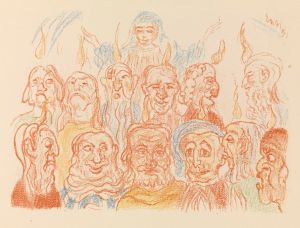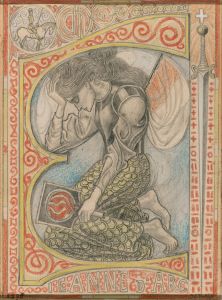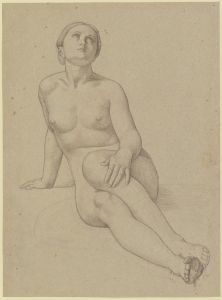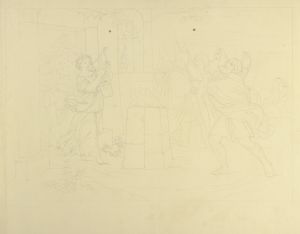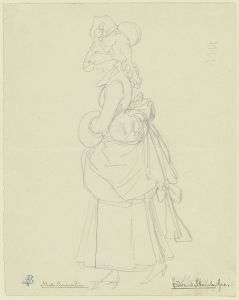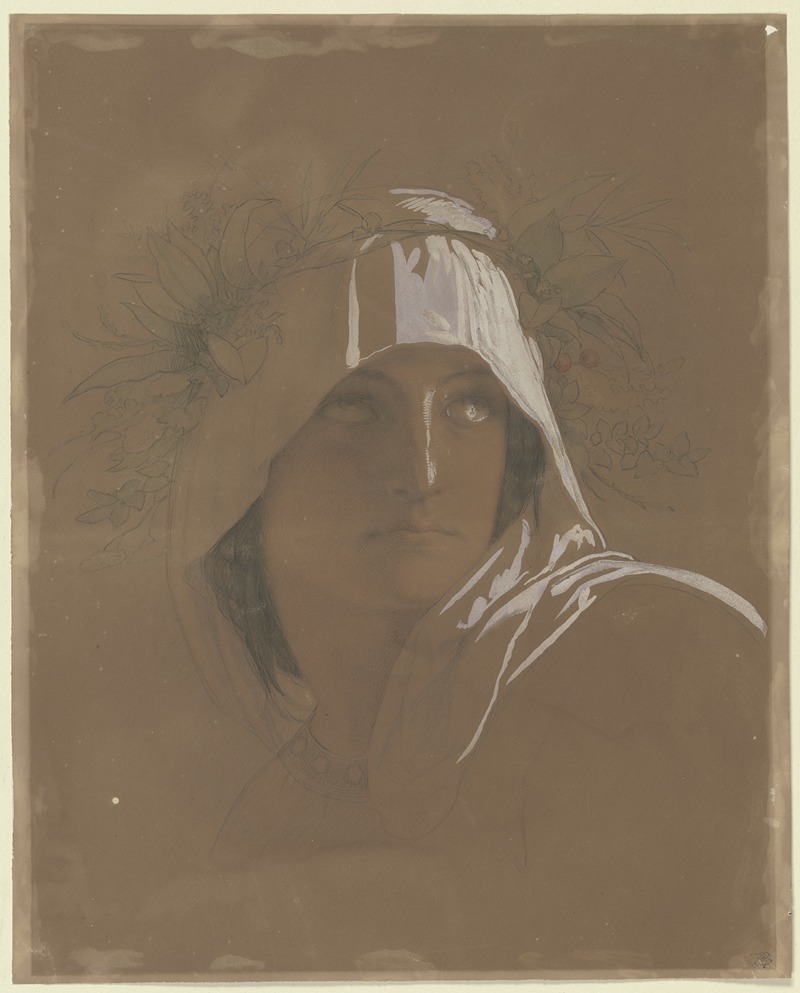
Kopf der Tiburtinischen Sibylle
A hand-painted replica of Eduard von Steinle’s masterpiece Kopf der Tiburtinischen Sibylle, meticulously crafted by professional artists to capture the true essence of the original. Each piece is created with museum-quality canvas and rare mineral pigments, carefully painted by experienced artists with delicate brushstrokes and rich, layered colors to perfectly recreate the texture of the original artwork. Unlike machine-printed reproductions, this hand-painted version brings the painting to life, infused with the artist’s emotions and skill in every stroke. Whether for personal collection or home decoration, it instantly elevates the artistic atmosphere of any space.
Eduard von Steinle was a notable 19th-century German painter associated with the Nazarene movement, which sought to revive honesty and spirituality in Christian art. One of his works, "Kopf der Tiburtinischen Sibylle" (Head of the Tiburtine Sibyl), reflects his dedication to religious and historical themes, characteristic of the Nazarene style.
The painting "Kopf der Tiburtinischen Sibylle" depicts the head of the Tiburtine Sibyl, one of the legendary prophetesses from ancient Greco-Roman mythology. The Sibyls were believed to possess the ability to foretell the future, and the Tiburtine Sibyl, in particular, was associated with the town of Tibur (modern-day Tivoli, Italy). In Christian tradition, she is often linked to prophecies concerning the birth of Christ and the Last Judgment, which made her a popular subject in religious art during the Renaissance and beyond.
Steinle's portrayal of the Tiburtine Sibyl is emblematic of his style, which often combined meticulous attention to detail with a deep sense of spirituality. The painting captures the Sibyl with an expression of serene contemplation, her gaze directed slightly upwards, suggesting a connection to the divine. Her features are rendered with delicate precision, highlighting Steinle's skill in portraiture and his ability to convey emotion and depth through subtle facial expressions.
The Nazarene movement, to which Steinle belonged, was founded in the early 19th century by a group of young German artists who sought to return to the purity and spirituality of medieval and early Renaissance art. They rejected the academic art of their time, which they viewed as overly commercial and lacking in spiritual depth. Instead, they embraced a style characterized by clear lines, bright colors, and a focus on religious and historical subjects. Steinle's work, including "Kopf der Tiburtinischen Sibylle," exemplifies these principles, combining technical skill with a profound sense of devotion.
Steinle's contribution to the Nazarene movement and his influence on religious art in the 19th century were significant. He was a professor at the Städelschule in Frankfurt, where he taught and mentored many young artists, spreading the ideals of the Nazarene movement. His works were widely appreciated for their spiritual intensity and technical excellence, and he played a crucial role in the revival of religious art during his time.
"Kopf der Tiburtinischen Sibylle" is a testament to Steinle's artistic vision and his commitment to the ideals of the Nazarene movement. The painting not only reflects his technical prowess but also his ability to imbue his subjects with a sense of spiritual presence. Through his depiction of the Tiburtine Sibyl, Steinle invites viewers to contemplate the intersection of myth, prophecy, and faith, themes that were central to his artistic and spiritual journey.







